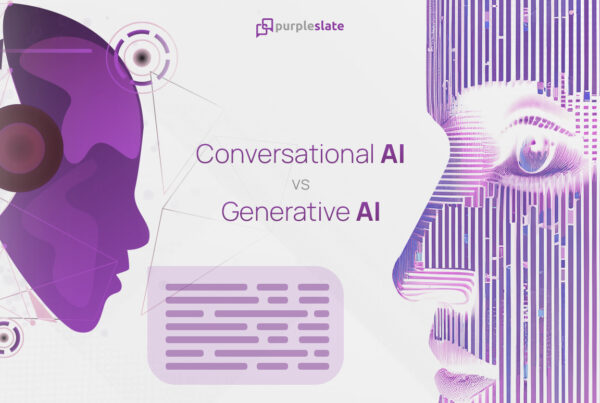
Introduction
“The Global Machine learning as a Service Market size is expected to reach $36.2 billion by 2028, rising at a market growth of 31.6% CAGR during the forecast period” – Globe Newswire
Surprised? Don’t be. Machine learning is the process of using and developing computer systems that can learn and adapt on their own without following specific instructions by using statistical models and algorithms to analyze data and make conclusions or inferences using the patterns in the data. You can use Machine Learning (ML) to enable machines to mimic the human brain and attain that high level of intelligence.
Why is machine learning important?
Machine learning as a concept has existed for a while now, and it was first used by its programmer Arthur Samuel to make predictions in the game of checkers. ML uses analysis and algorithms to make predictions based on the data received no matter the field involved, as long as the data is accurate.
Machine learning has been instrumental in solving problems at a fast pace and wider range than any human can, bringing results faster and improving efficiency. ML has a vast amount of computational skills in just a single task or specific tasks; you can train machines to recognize the relationships and patterns in any data put into it by making the whole process more efficient.
What are the different types of machine learning?
Different types of ML can be used based on the task at hand, the researcher, and the type of machine involved. Below are the different types of machine learning:
- Supervised learning
This is a type of machine learning where supervision is involved. It is the process of applying things previously learned as instances or examples to train the algorithms to predict events that would happen in the future accurately. Supervised learning helps businesses solve real problems on a massive scale, e.g. classifying spam in a different folder from important mail.
- Unsupervised learning
Unsupervised machine learning is where users don’t need to supervise the process. The machine uses an untagged dataset to find information and patterns that were not discovered initially and treats them appropriately. The goal is that the machine uses mimicry to form an internal representation of the world and formulate creative content from the imagination. Unsupervised learning’s ability to find differences and similarities in data or information makes it the best for customer segmentation, data analysis, image recognition, and cross-selling strategies.
- Semi-supervised learning
This is usually referred to as a form of weak machine supervision and is a machine learning process that combines supervised and unsupervised machine learning by combining a large number of unlabeled data with a small amount of labeled data when training the machine. The main purpose of semi-supervised learning is to treat the data point differently depending on whether it doesn’t have a label or does. The algorithm uses traditional supervision for the labeled data, while for the unlabeled one, it reduces the prediction discrepancies with other training types to make an accurate prediction.
- Reinforcement learning
Reinforcement learning is a machine learning method that rewards the machine for producing the desired results or doing the desired tasks and punishing it for partaking in undesirable tasks or bringing forth unwanted results. Reinforcement agents can observe and interpret their environment to use trial and error to take action, learn and improve.
How does supervised machine learning work?
Supervised machine learning can be used in the following ways:
- Binary classification
Supervised machine learning is used in binary classification. This is mainly about the classification tasks that involve two class labels. The tasks that use binary classification usually involve one class known as an abnormal state and another class known as the normal state. Examples of binary classification uses include
- Spam detection for email {is it spam or not}
- Prediction of conversion {buy or not}
- Multi-class classification
Supervised machine learning is usually used in multi-class classification. It generally refers to classification tasks that have over two class labels. Multi-class classification is much different from binary as it doesn’t have abnormal and normal outcomes, but its examples are usually classified to belong to a range of classes that are known. Examples:
- Classification of face
- Classification of plant species
- Regression modeling
Supervised machine learning for regression modeling. Regression is the technique used to envision continuous values. The main goal of using this system is to find the best-fit line, the path that shows a curve among the data. Using the number of input features as a baseline, regression is usually classified under one output and one input[linear], one output and many inputs[multiple], and many outputs[multivariate].
- Ensembling
This is a universal meta-approach to supervised machine learning, where it tries to find better and more accurate prediction performance by bringing the prediction from different models and combining them.
How does reinforcement learning work?
The following are ways reinforcement learning works:
- Robotics
Reinforcement machine learning helps robots to be able to learn from mistakes they make, correct and adapt not to make such mistakes anymore. The robots learn from their mistakes when they notice no reward or good progress.
- Video Gameplay
There has been much application of machine learning in video games, using statistical modes and algorithms to enable machines to perform without specific programming.
- Resource management
Machine learning is used in resource management algorithms to ensure that the core clouds and slices of cloudlets have equal computing resources.
How does unsupervised machine learning work?
Unsupervised machine learning works in the following ways:
- Clustering
Clustering is a process of unsupervised machine learning that groups similar structures. The main aim of this machine learning process is to look for data point similarities and group instances with similar data points.
- Anomaly detection
Unsupervised machine learning anomaly detection is used to search for rare events and objects in an unlabeled dataset, especially when there is usually only a small number of undetected data. Usually, the only information obtained is that the anomalies are lower than 1%.
- Association mining
Association mining unsupervised machine learning is a rule-based learning method used to find intriguing relationships between different data and variables in a broad database. It is mainly used to use a form of interestingness to good vigorous rules in a database.
- Dimensionality reduction
Dimensionality reduction and unsupervised machine learning are the methods used to reduce the amount of variables input in a dataset. Dimensionality is usually used to describe a dataset’s number of features or input variables.
How does semi-supervised learning work?
The following are ways in which semi-supervised machine learning works:
- Machine translation
Machine translation is used to investigate and use software to translate speech or text from one language to another. It simply performs word substitution from one language into another.
- Fraud detection
Fraud detection uses a dataset example usually obtained from credit card transactions and a machine learning model to search and find traces of fraud. The model learns on its own, allowing it to adapt and better identify old and new fraud patterns that are unknown.
- Labeling data
Labeling data in machine learning involves recognizing and reading the raw data [videos, text files, pictures, etc.] and, based on the result, placing one or more relevant and informative labels to precisely describe the context so a model can learn from it.
Who’s using machine learning, and what’s it used for?
Machine learning is something humans use every day in one form or another. There are many ways you can use machine learning. Examples of how you can use machine learning are:
- Customer relationship management
- Business intelligence
- Human resource information systems
- Self-driving cars
- Virtual assistants
Conclusion
Machine learning is an important part of technology to make things move smoothly and can be carried out in four major ways. It is an aspect of technology that helps improve on already existing predictions or make new predictions by giving information or helping humans with tasks that need to be done, significantly improving the speed at which they get done.




